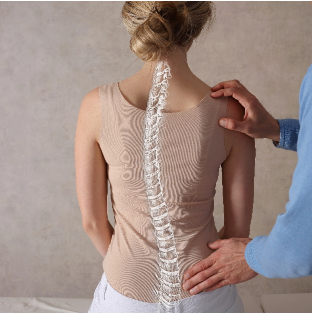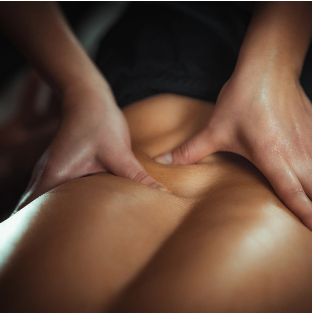
Posterior cervical fusion is a surgical procedure that joins (or fuses) two or more cervical vertebrae together. The procedure can be crucial in restoring one’s spinal health in scenarios where trauma, tumors, arthritis or infection have caused damage to the spine, nerves, or spinal cord.
Cervical spine health is commonly disrupted by intervertebral disc damage, which can be caused by disease or strain. Spinal cord stenosis and nerve injury are also common issues in the cervical spine.
Patients who need posterior cervical fusion often suffer from chronic neck pain that has resulted from degenerative spinal disorders, such as osteoarthritis. The pain caused by cervical spine conditions and disorders generally occurs due to wearing down of protective tissue and cartilage in the region over time, and is often a form of arthritis. This pain can be addressed and minimized by performing a posterior cervical fusion surgery.
During a posterior cervical fusion surgery, an expert surgeon will fuse segments of the vertebral spine together, so that the individual vertebrae cease to cause friction independently and create pain for the patient.


Advances in technology allow for this procedure to minimize tissue damage and blood loss. First, the cervical spine is secured to ensure safe positioning throughout surgery. Next, a vertical incision is created on the back of the neck, the spine is exposed, and any pressure on the spinal cord or peripheral nerves by bone or diseased disc is removed. Hardware is placed through image-guided navigation techniques. This new technology allows an expert surgeon to stabilize the spine throughout the procedure.
Facet joints are the connections between the bones of the spine. Conditions resulting from issues with facet joints can lead to pain in other parts of the body because nerve roots pass through these joints to go through the spinal cord to the arms, legs and other parts of the body. Symptoms of damage in the facet joint in the neck that impact traversing nerves include pain in the hand or arm, tingling and/or weakness.
A bone spur is a bony growth that can develop on the edge of a bone and create a painful impact. Bone spurs rub on the nerve root and the pressure of that irritant causes pain.




Posterior cervical fusion surgery is a procedure whereby two or more cervical vertebrae are fused together. This may be done by approaching the damaged spinal vertebrae from the back of the neck. This is in contrast to an anterior cervical fusion where a surgeon makes the approach to remove a cervical spine from the front of the spine, through the throat. Your surgeon will opt for the approach that allows them to achieve easiest access to the damaged disc while also taking the approach that offers the most stability to the spine. Screws or rods will be applied to the spine during fusion surgery as well, as these instruments aid in stabilizing the region.
A variety of spinal cord injuries may require a posterior fusion procedure. The most common scenarios may include: degenerative disc disorders, recurrent disc herniation, spinal deformity, symptomatic spinal stenosis and pseudoarthrosis, spondylolisthesis, spinal fractures, tumors, infections and scoliosis, among others.


The steps to a posterior fusion procedure include:
Prepping the patient
Incision
Removal of the lamina
Removal of herniated disc and fragments
Bone graft
Insertion of screws and rods
Closure
A bone graft is a surgical procedure that helps to facilitate the fusion by replacing the missing bone with material (artificial, synthetic or natural and from a patient’s own body) that encourages bone tissue to regenerate, if provided space to grow. Bone grafting also helps to stabilize the cervical spinal cord.
Successful spinal surgery requires great precision and care – only a highly specialized spinal surgeon will know how to avoid complications related to spinal cord and nerve injury.
During the initial weeks that follow a posterior cervical fusion surgery, your doctor will recommend rest and place restrictions on your movement such as lifting, pushing and pulling. It is however important to move around and walk – even the same day as your surgery – in order to avoid blood clots.
Your surgeon will recommend pain management and physical therapy treatments in the weeks following your surgery. It is important that patients commit to their physical therapy regime after surgery in order to achieve the best results for regaining mobility, strength, and healing in restoring the spine.
Most patients do not feel up to participating in normal physical activities for at least 6 weeks post-surgery, but sedentary activities are usually possible for patients after 2-3 weeks after posterior cervical fusion surgery. Bending, lifting more than 5 pounds, and twisting will be restricted for most patients several weeks after surgery in order to allow for the healing process to flourish. Patients can expect to wear a hard collar at first, followed by a soft collar, before gentle range of motion is allowed.
The benefits of posterior cervical fusion surgery include: improved spinal stability, reduced neck pain from facet arthritis, reduced pressure on the spinal cord to prevent the progression of stenosis-related nerve injury, the release of tightness and muscle tension in the neck, and relief to surrounding joints, bones and discs.
There are some risks associated with posterior cervical fusion surgery. The most common immediate complications include acute blood loss anemia, surgical site infection (SSI), C5 palsy, and incidental durotomy; the most common long-term complications include adjacent segment degeneration, junctional kyphosis, and pseudoarthrosis. Dr. Jerermy Smith, M.D., minimizes these risks by performing surgery safely and expeditiously, utilizing cutting edge technology and navigation assistance to minimize blood loss and focus on a more controlled surgical performance in a targeted region.
In patients for which surgery is recommended, they should anticipate that the benefits far outweigh the potential risks of a posterior cervical fusion surgery; however, they should also set their expectations to a realistic post-surgery recovery time. While posterior cervical fusion surgery allows for many improvements in a patient’s life, it is unrealistic to assume that one can return to normal physical activities before the 6-8 week mark.


The spine is a very delicate structure in the body and recovery from posterior cervical fusion surgery will require the continued care and monitoring of a loved one for the patient. This is particularly the case if a patient has suffered from a spinal cord injury prior to surgery. Our spinal health affects our entire experience in our bodies and taking great care to prepare for the healing process after surgery – with the proper amount of support – is of the utmost importance.
After your posterior cervical fusion surgery, it is important to check in with your doctor for any concerns or abnormalities as soon as they arise, and to keep track of your progress and healing on a regular basis. Patients who actively participate in their recovery journey – by committing to their physical therapy and regular wellness check-ins with their doctor – are far more likely to have the best success rate during their posterior cervical fusion recovery.
“Dr. Smith is not only <em>extremely compassionate</em> and caring, but a <em>talented and skilled surgeon</em>. He performed my second cervical fusion and will now do a posterior cervical fusion. <em>I am truly grateful</em> to have been referred to him with all of the pain I’ve suffered. I am certain that working together we will find the pain relief I so desperately need. <em>Thank you Dr. Smith!</em>”
"I had spinal fusion surgery in 2019 from Dr. Smith. I was personally devastated. As an extremely active individual, I thought my life was over. Going into 2023, I'm in better physical shape than anytime in my life. As an avid cyclist I ride 100 plus miles harder and faster than anyone I know. I ski. I work out. I've had ZERO issues. If you ever want a pro bono testimonial I'm all in. Dr. Smith and team literally saved my life."
"Thank you for truly saving my life on March 30, 2022. The pain I had was almost too over bearing for me that it sent me into a depression that was changing my whole life and not for the better. You and your staff and the entire hospital, treated me like a VIP/ aka.Princess and I’m eternally grateful that it all started with you, your wonderful PAs and your God blessed talents."
Dr. Jeremy Smith, M.D., earned his medical degree from New York Medical College where he received Alpha Omega Alpha honors and graduated at the top of his class. Dr. Smith went on to complete his orthopaedic residency at The University of California, Irvine, serving as chief resident in his final year. He then completed an orthopaedic surgery fellowship at the Rothman Institute at the Thomas Jefferson University Hospital – a program widely regarded as one of the most sought-after and prestigious spine fellowships in the country. Dr. Smith has since won the hearts of many of his patients and continues to serve his community in California by sharing his insights from years of experience with new patients and fellow spinal surgeons alike.
Dr. Smith leads with compassion, every time. He is dedicated to finding a better future for all of his patients, and is ready to listen every step of the way. With advances in the field of spinal surgery being made every day, Dr. Smith stays abreast of technological innovations that help keep his patients safe and in good hands. His state-of-the-art facility and proven track record make Dr. Smith one of the most sought after spinal surgeons in the nation.
Contact us today at Dr. Jeremy Smith, M.D., for a consultation and begin your path to a pain-free future!

How long is the recovery time for ACDF surgery?
Will I still have neck pain after ACDF surgery?
The goal of complex spinal deformity surgery is to improve posture/alignment, reduce pain, reduce dysfunction and resolve issues with mobility by repairing 6 or more vertebral bones in this reconstructive surgery.
Is spinal deformity surgery high risk?
What are the most common complications?
The most common complication from a spinal deformity surgery is infection - this can be carefully monitored and tended to post-surgery, and therefore, there is high likelihood it can be avoided.
Who is not a good candidate for this type of surgery?
The types of treatment options that are recommended for spinal deformities align with a patient’s age, overall health, and the presence of associated symptoms. These factors may or may not make you eligible for this type of surgery.
How should I prepare for deformity correction and stabilization?
A stabilization procedure may be necessary before any corrective surgery, such as an osteotomy, pedicle subtraction osteotomy, vertebral column resection, or spinopelvic fixation - each of which involve the removal of, or instrumentation into, bone. This will help the region to be better prepared for a spinal deformity surgery. You should also participate in routine exercise and quit smoking before all procedures and surgeries.






CATHERINE JOHNSON • LAGUNA BEACH, CA